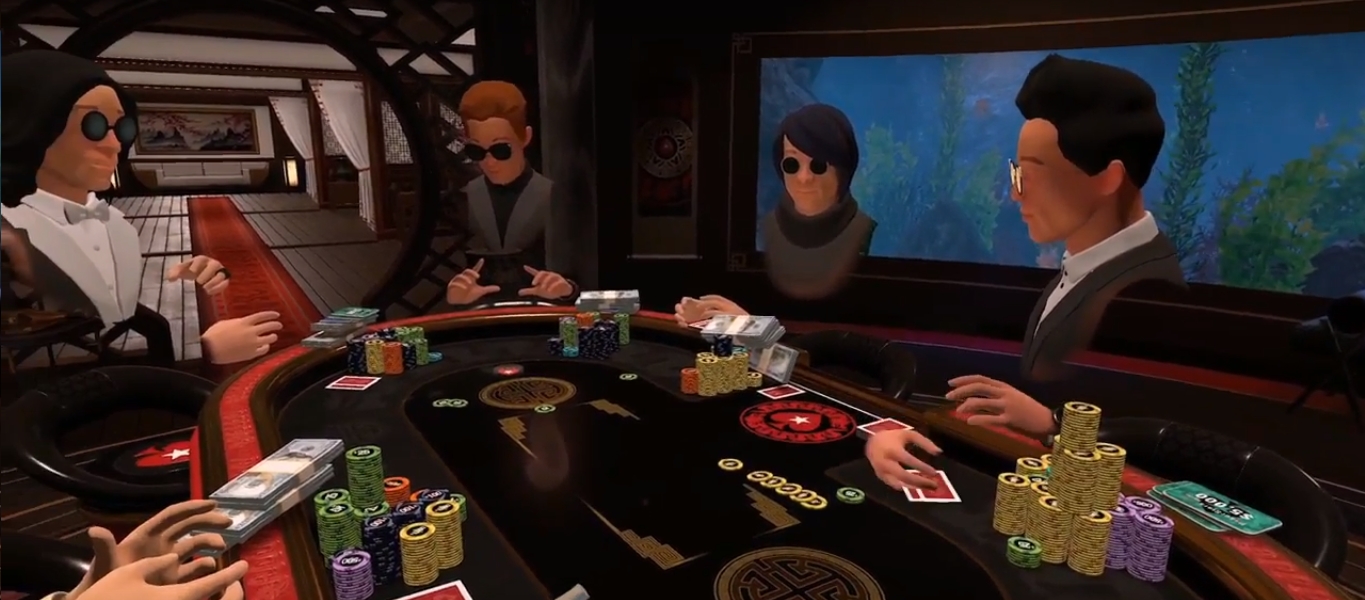
Newest Poker Trends in 2018: Short-Deck and Virtual Reality Take Hold
Poker operators and broadcasters alike thought outside of the box in 2018, embracing the latest tech trends to entice new players.

Short-deck poker was the breakout star in 2018, but 2019 could see PokerStars VR steal the limelight. (Image: The VR Realm/YouTube)
As poker’s demographics change and industry insiders move to attract more casual fans, entertainment became a focus for the leading brands this year. Ahead of the World Series of Poker (WSOP), broadcaster Poker Central announced a partnership with Twitch.
Innovations Open Up Poker
Extending its relationship with the streaming platform, Poker Central’s deal gave fans the chance to watch 30 tournaments and 25 final tables for free. As well as showing the game’s best in the $10,000 Heads-Up Championship and $50,000 High Roller, the Twitch streams gave the WSOP a potential audience of 15 million daily viewers.
Building on this push to introduce more people to poker’s entertaining side, PokerStars released a host of new games this year. Although some flopped, the intention to make poker fun again was clear.
Swings and Misses
First to go live in March was PokerStars new Split Hold’em. Introducing the game, the operator described it as one that would give players thrilling moments and fun decisions by doubling the amount of action per hand.
“Split Hold’em will be immediately familiar to No Limit Hold’em players, with one single powerful twist– two flops, two turns, two rivers, and two halves of the pot to win,” read the March press release.
Despite some initial popularity, PokerStars called time on Split Hold’em in May before introducing another newbie, Unfold Poker. Branded as the game with “no regrets,” Unfold allowed players that folded pre-flop to pay an extra bet, rejoin the action, and play for a second pot once the flop was dealt.
Entering New Realities
Although the novel idea did attract some initial interest, concerns about additional rake forced PokerStars to fold the game just a month after its release. As 2018 played out, ideas like Fusion Poker made a showing, but it was the PokerStars’ move into virtual reality (VR) that proved the most interesting.
Although a finalized product isn’t expected until 2019, the operator wants to create a true 360-degree online poker experience and redefine our perception of the digital game.
New Ways to Play and Party
While PokerStars was flooding the market with some good and some not-so-good ideas, other operators were busy revamping some tried and tested ones. In April, Partypoker moved to improve its tournament ecosystem with the launch of Partypoker Live $$$.
The new currency is the operator’s way of making it easier for players to enter tournaments and pay for travel. Although tournament dollars aren’t a new concept, Partypoker’s coins can be used in more ways than their predecessors.
Short-Deck Stars
In the same way that Partypoker took an established idea and ran with it, the Winning Poker Network (WPN) picked up on a trend that caught fire with players this year. With high-stakes stars like Tom Dwan and Phil Ivey now heavily into short-deck poker, the network launched its own take on the game.
Going live in September, the high-octane variant was initially spread as a cash game, before tournaments were introduced. Subsequently, rumors surfaced that PokerStars was also planning to launch a short-deck variant, showing that at least one innovation has struck a chord with fans in 2018.















0 Comments